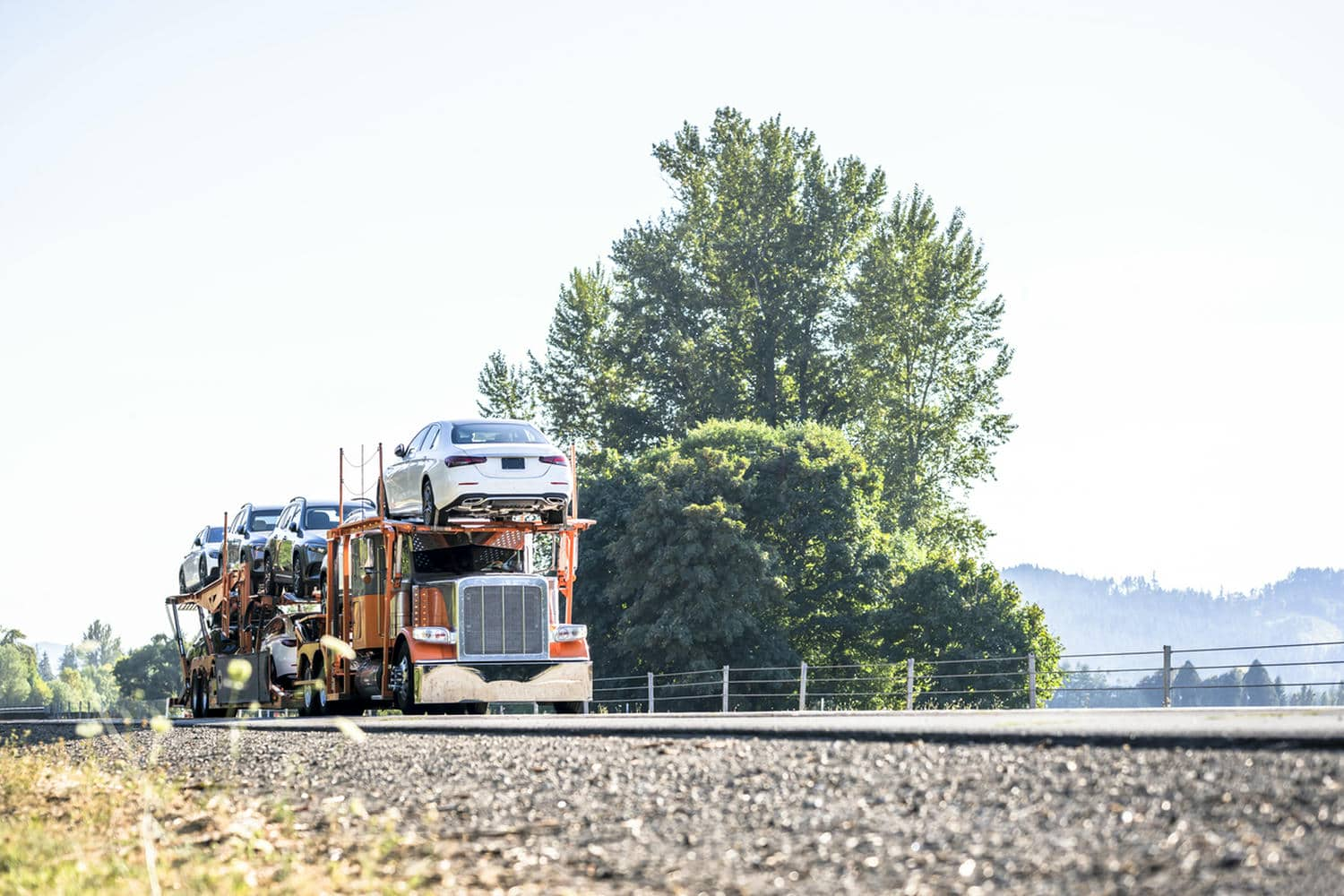Car shipping can be an efficient solution for relocating vehicles; however, hidden fees frequently complicate the overall expense. This article explores how hidden fees manifest during the vehicle transport process, the impact these costs can have on your estimated vehicle shipping expenses, and actionable strategies for ensuring that your quote is as transparent as possible. As vehicle shipping companies navigate complexities such as customs, liability insurance, and varying state fees from Missouri to New York City, understanding the fine print is essential. Whether you are shipping a sedan, classic car, luxury vehicle, or even freight cargo, encountering fees for inoperable vehicle handling, fuel adjustments, or expedited processing through flatbed trucks can add unexpected costs to your bill. By breaking down the main contributors to these hidden fees, Ship a Car, Inc.—a top-rated and trusted nationwide auto transport broker—aims to provide you with the clear and concise information needed to budget responsibly. With insights gathered from peer-reviewed studies and industry data, this article is designed to help consumers and businesses alike navigate the intricacies of car shipping cost calculators and secure honest, all-inclusive quotes.
Transitioning now to the detailed outline, the following sections will explain how car shipping cost calculators work, what factors affect vehicle shipping estimates, potential hidden fees, interpretation of estimate results, and finally, actionable tips for obtaining the most precise calculation for your shipment.

The car shipping cost calculator is an essential tool that simplifies the complexity of obtaining an accurate quote for auto transport services. It works by gathering specific data about your shipment, such as pickup and delivery locations, vehicle details, and transport preferences. The very first input required is your pickup and delivery addresses, which the system cross-references with current traffic, state-specific fees, and route complexities. This helps ensure that distance factors—including the mileage from states like Kansas to Connecticut or geographic obstacles like mountainous terrain—are factored into the estimate.
Inputting your exact addresses for both pickup and delivery is the cornerstone of achieving an accurate shipping quote. This step not only clarifies the distance but also highlights potential variations in cost arising from rural versus urban areas. For instance, shipping a vehicle from a suburban area in Missouri might incur fewer additional fees than from highly congested locations in New York City. This data is crucial as it triggers algorithms that review factors such as traffic conditions, road infrastructure, and logistical challenges, ensuring that the carrier’s route planning is both realistic and cost-effective.
Once locations are confirmed, the next step involves providing detailed information about your vehicle. Variables such as make, model, year, and overall condition (e.g., running or non-running) directly impact shipping cost estimates. Factors like weight, height, and length can significantly influence whether a flatbed truck or an enclosed carrier is required. Additionally, these details help determine the necessary handling and the risk category for insurance purposes. Also, modifications such as custom paint jobs or oversized parts may necessitate specialized equipment, potentially leading to extra fees that the calculator anticipates when properly disclosed.
Choosing between open carrier and enclosed transport is another decision point that affects the final quote. Open carriers are generally less expensive due to lower operating costs and wider availability. However, if shipping a high-value or vintage vehicle, many opt for enclosed transport for enhanced security. This calculator allows you to select the transport type that best aligns with your priorities, be it budget, safety, or the condition preservation of your vehicle. By making this selection, the calculator applies relevant fee structures and evaluates insurance pairing, which is essential when contrasting across different states such as Alabama, Indiana, and Nevada.
After all inputs are provided, the calculator synthesizes the information and generates an instant shipping quote. This estimate reflects various factors, including base costs, mileage rates, and potential surcharges. Notably, these quotes incorporate dynamic factors like seasonal demand—which can vary from the coast of South Carolina to the highways of West Virginia—and hidden fees that might be initially overlooked. It even factors in additional costs related to vehicle preparation and insurance enhancements. The result is a comprehensive, transparent quote designed to facilitate an informed decision when comparing multiple carriers.
Key Takeaways: – The calculator integrates pickup and delivery locations with real-time traffic and route data. – Detailed vehicle inputs such as size and condition ensure a tailored estimate. – Transport type selection significantly influences the cost and type of service provided. – Instant quotes reflect base, mileage, and dynamic seasonal fees for transparent cost estimation.

Various tangible factors influence the final vehicle shipping quote provided by calculators, and understanding these components can empower customers to negotiate and plan accordingly. The shipping estimate is primarily affected by factors related to distance, vehicle specifics, carrier type, and even timing. Knowledge of these elements can help you avoid underestimating the overall cost, especially when unexpected surcharges emerge due to fuel price adjustments, insurance options, or state-specific fees.
The overall mileage between the pickup and delivery points is the foundation upon which shipping estimates are built. Longer distances generally increase costs due to higher fuel consumption and longer carrier route times. However, route complexity also plays a vital role; transport routes that traverse mountainous regions or congested urban centers may require special permits or diversions, leading to additional fees. For example, shipping a vehicle over a route that passes through Kansas or from the dense urban corridors of Connecticut may involve older infrastructure, tolls, or road usage fees. Carriers may also charge premium rates during periods of heavy traffic, further affecting the final cost.
The dimensions and condition of your vehicle significantly influence transportation logistics. A larger, heavier vehicle may necessitate a different type of carrier, such as a flatbed truck, to accommodate its dimensions and weight. If the vehicle is non-operational or has suffered damage, additional services such as winching or special loading mechanisms might be required. These requirements shift the baseline cost upward. Regular sedans might charge less compared to unique vehicles like luxury cars or reclaimed classics, where additional insurance and handling fees apply. Providing detailed vehicle information ensures that the quote you receive accurately reflects your specific transportation needs.
The method of transportation, whether open or enclosed, bears a significant impact on the shipping estimates. Open carriers, which are widely used due to their cost efficiency, expose vehicles to the elements. Although this is acceptable for standard shipping needs, shipping a high-value or utilitarian vehicle may require enclosed transport to reduce the risk of weather damage or debris impact. Enclosed carriers are typically more expensive but offer the added benefit of reduced liability risk. This choice also influences insurance premiums, as carriers with enclosed options usually provide additional coverage that protects against environmental hazards. When the calculator factors in these options, it ensures that every safety and liability concern is accounted for in the final estimate.
Shipping costs are subject to fluctuations depending on the season. Peak moving seasons, generally during summer months or before the beginning of a school year, see higher demand, thereby increasing transport costs. Extreme weather conditions in states like New Mexico, Indiana, or South Carolina can also influence the rate due to longer delivery times and the need for weather-resistant measures during transit. Seasonal variations might trigger surcharges or even expedited fee structures. Rate changes driven by seasonal demand highlight the need for timely planning, as booking during off-peak times can result in substantially lower fees.
The flexibility of pickup and delivery schedules plays a key role in estimating overall costs. Car shipping companies often adjust their fee structures based on how urgently a vehicle is needed at the destination. If customers require a very tight schedule or expedited delivery, carriers typically charge a premium to prioritize the shipment over other scheduled routes. Conversely, if the shipment is flexible, carriers might offer more competitive rates by aligning with their pre-planned routes. The cost calculator incorporates these timing dynamics, ensuring that when you request an instant vehicle shipping quote, the promise of on-time delivery is balanced against any additional fee for expedited service.
Key Takeaways: – Distance and route complexity combine to create the foundational cost structure. – Vehicle dimensions and condition directly alter the shipping method and associated fees. – The choice between open and enclosed carriers impacts both cost and insurance requirements. – Seasonal demand and urgent delivery timelines can trigger premium fees. – Accurate data input on these factors fosters a tailored and transparent shipping estimate.

Hidden fees in car shipping costs are not always apparent on the surface, but they can significantly increase your final bill if left unchecked. These fees may arise from service surcharges that information platforms do not initially reveal, such as fuel price adjustments, additional handling charges for inoperable vehicles, or storage fees if scheduling delays occur during transit. Understanding these potential add-ons is crucial for managing your transportation budget and avoiding unwelcome surprises when it comes time to pay.
Many shipping companies include promotional quotes that appear affordable until additional charges become apparent during the booking process. Common examples of hidden surcharges include pickup and delivery fees, terminal handling charges, and state-specific tolls or permits that are not factored into the basic quote. For instance, a car shipping quote provided in states like Kentucky or Mississippi might seem low initially; however, when additional fees for off-hour services or residential pickups are added, the final price may be significantly higher. The cost calculator is programmed to alert customers about these potential charges when enough input data is provided, but it remains essential for customers to ask questions and request detailed breakdowns before committing.
The volatility of fuel prices forces many carriers to include a fuel surcharge as part of their overall pricing strategy. This fee adjusts dynamically based on global fuel price fluctuations, meaning if prices spike due to geopolitical events or seasonal changes, your shipping cost may run higher than the initial estimate. Studies indicate that fuel price surcharges can account for up to 10% of the total shipping expense, emphasizing the need for consumers to verify current markup rates for states ranging from Arkansas to West Virginia. Notably, some companies offer fixed rates that include fuel cost assurance, thereby eliminating unexpected hikes after the shipment has begun.
Another source of hidden fees relates to insurance coverage options. While standard liability coverage is typically included in the base shipping cost, any upgrades for additional protection may incur extra fees. For those shipping classic cars or luxury vehicles, opting for comprehensive coverage may protect against damage during transit but will simultaneously increase your overall expense. In some instances, customers are required to pay for enhanced insurance separately—whether to cover inoperable vehicles or safeguard against road debris encountered in urban traffic—making it vital to ensure your quote clearly outlines what is included and what is not. The car shipping quote should detail if and when you need to factor additional insurance premiums.
Delays during automobile transport can sometimes result in storage fees at transit hubs or terminals, where your vehicle must wait longer than expected before pickup or final delivery. For instance, if a shipment is delayed due to customs or local paperwork issues in states like Delaware or Connecticut, carriers may charge storage fees. These fees can occur in daily increments and add up rapidly if the vehicle remains in storage for several days or longer. Understanding these potential retrieval storage charges is essential, and you should verify the cancellation and delay policies with your chosen shipping company before signing any contracts.
Finally, special fees apply if the vehicle being shipped is non-operational. Inoperable vehicles require unique procedures for loading, securing, and unloading, often involving additional labor and specialized equipment. This can lead to extra surcharges that vary based on the complexity of the task and the vehicle’s weight and size. The cost calculator should prompt users to indicate if their vehicle is operable or non-running, as this information is critical for deriving an accurate cost estimate and preventing unexpected add-on costs during transit.
Key Takeaways: – Hidden fees can emerge from extra services like residential pickup and terminal handling. – Fuel surcharges fluctuate with market conditions and can significantly impact total costs. – Enhanced insurance coverage for high-value vehicles can lead to extra premiums. – Storage fees may be incurred if delays occur due to documentation or customs. – Special handling charges apply for inoperable vehicles, contributing to the overall shipping expense.

Once your vehicle shipping quote is displayed, it is essential to understand what the estimate covers and how to compare it with other competitors’ offers effectively. The car shipping cost calculator aggregates a wide range of factors such as distance, vehicle type, and the currently selected transport options to provide you with a comprehensive estimate. However, discerning which fees are included in the published quote and which may become additional charges is the key to making an informed decision about your auto transport service.
An estimated shipping price generally encompasses the base rate for transportation, which incorporates mileage costs, carrier fees, and standard operational expenses. Alongside these, the estimate might include certain insurance coverages, handling fees, and administrative expenses. For example, a quote generated for shipping a sedan from South Carolina to Illinois factors in standard highway transport expenses and logistics handling fees—yet it might not explicitly itemize fuel surcharges or extended insurance options. The estimate presents a snapshot that combines all known cost factors at that moment, but it is imperative to request a detailed breakdown of all inclusions to avoid surprises at billing time.
Comparing quotes is a vital step in the vehicle shipping process. Not all quotes are created equal: while one carrier might offer a lower base rate, it could compensate by levying several hidden fees later in the process. When comparing different estimates, it is essential to look for transparency regarding each charge, including fuel surcharges, expedited pickup fees, and additional service costs for non-standard vehicles. Consumers should also consider the reputation and customer service records of carriers offering quotes. In general, reputable companies provide detailed cost breakdowns that include a list of all standard services and potential extra charges, aiding you in making a balanced and informed comparison.
To budget accurately for your vehicle shipping project, it is crucial to establish a realistic total expenditure. This involves not only considering the initial shipping quote provided by the calculator but also anticipating optional extras such as insurance upgrades and potential storage fees. Further, by comparing quotes across different transport companies, you can derive an average cost range and include a contingency fund in your budget. For instance, a vehicle shipping quote for transporting a luxury car along major interstate highways may include additional premiums due to increased security and liability concerns; thus, understanding this composite fee is necessary to avoid underbudgeting.
The instant quote provided by the car shipping cost calculator is a strategic tool in planning your shipment schedule. With a clear estimate, you can better coordinate pickup and delivery times, manage financial expenditures, and prepare your vehicle for transport. If your shipment involves a narrow window for delivery—perhaps due to work commitments or the need to align with custom clearance processes—the estimated cost allows for planning around premium expedited options. Additionally, these estimates enable you to engage in proactive discussions with carriers regarding delivery timelines, thereby decreasing the likelihood of incurring fees for rescheduling or storage during unexpected delays.
Key Takeaways: – The estimated price includes base transport fees and standard insurance, but a breakdown is required for clarity. – Comparisons across multiple transporter quotes can expose hidden fees and improve negotiation. – A comprehensive budget should account for extra surcharges and a contingency fund. – The shipping estimate is essential for coordinating delivery schedules and managing time-sensitive shipments.

Achieving the most precise calculation for your car shipping needs involves careful reporting of details and clear communication with your transport provider. The more information you provide, the more accurately the cost calculator can tailor its quote to your specific scenario. Simple miscalculations—like inaccurate addresses or incomplete vehicle specifications—can result in significant price variations once the vehicle is transported. Here are several practical tips to refine your calculations and ensure that the final estimate is both accurate and reliable.
Providing the most specific, complete addresses for both pickup and dropoff locations is critical. For instance, supplying only a zip code without a street address could result in an estimate that is off by a significant margin. Detailed addresses allow the cost calculator to accurately gauge route distances and potential obstacles, such as urban traffic or remote rural conditions. This detail is particularly important for areas with complex logistical networks, such as densely populated regions in Connecticut or mixed urban-rural areas in Arkansas. Missing or incorrect address data can lead to the need for route adjustments, causing delays and additional charges that were not originally accounted for.
Modifications to your vehicle that alter its standard dimensions can influence shipping requirements. Information about roof racks, aftermarket body kits, or unusually large tow bars helps carriers determine the correct type of transport vehicle and the necessary loading procedures. Without such details, carriers might assume a standard size and subsequently charge extra for specialized handling. Accurate disclosure of these modifications leads to a properly adjusted weight and size assessment which the calculator uses to generate a precise shipping quote. Clearly outlining these modifications can save shipping time and prevent disputes when the vehicle is loaded onto the transport carrier.
Another fundamental detail to report is whether the vehicle is operable. A running vehicle is generally easier and cheaper to load, secure, and drive onto a transport vehicle. Conversely, a non-running vehicle may require special equipment for loading and unloading, thereby increasing the shipping cost. The cost calculator factors in this variable, so be sure to select the appropriate option. By accurately declaring your vehicle’s operational status, the calculator can generate an estimate that reflects any special handling requirements, thereby reducing the probability of unexpected fees when the vehicle is picked up and delivered.
Your choice between door-to-door car shipping service and terminal-to-terminal (or terminal-to-door) service influences the shipping cost significantly. Door-to-door service is often more convenient but tends to come at a premium due to additional drop-off and pickup logistics. Terminal service, while potentially less expensive, may require you to travel to a designated terminal for pickup or dropoff, which further impacts your overall transportation timeline. The cost calculator allows you to choose your preferred method, thereby integrating these preferences into the final estimate. Understanding these service differences ensures that you receive a quote that aligns with your priorities—whether that be convenience or cost savings.
Key Takeaways: – Accurate addresses are crucial for precise route quotations. – Any vehicle modifications must be clearly communicated to tailor the cost effectively. – Declaring the vehicle’s operational status prevents unforeseen extra fees. – Choosing the right service type (door-to-door vs. terminal) can optimize both cost and convenience.

After receiving your car shipping cost estimate, several procedural steps remain to turn that estimate into a successful vehicle transport experience. The next phase involves finalizing your booking, preparing your automobile for shipment, and ensuring that all documents and payment systems are properly aligned. This final section details the subsequent actions that customers should take to move seamlessly from estimate to execution.
Booking your vehicle transport service is the first actionable step after reviewing your estimate. Follow the instructions provided by your chosen shipping company, ensuring that you confirm pickup and delivery dates, review the final cost breakdown, and provide any additional details that were not initially included in your online submission. Engage with carrier representatives to clarify any uncertainties, particularly if there are additional surcharges for specific handling or timing that were noted in your quote. Verification of the booking process should include a written confirmation outlining every detail from cost to scheduled pickup, ensuring that all parties have a mutual understanding of the services offered.
Preparation of your vehicle is essential to minimize damage during transit and to adhere to any carrier requirements. Begin by thoroughly cleaning the vehicle inside and out, documenting its condition with photographs before shipment. Remove any personal belongings from the vehicle to avoid liability issues and ensure that modifications or sensitive equipment are either secured or removed. Additionally, conduct a maintenance check to confirm that your vehicle is in a stable, transport-ready condition. Address any issues that could affect functionality during loading or transit. This preparation not only protects against damage claims but may also streamline the inspection process upon delivery.
The bill of lading is a critical legal document that details your vehicle’s shipment agreement with the carrier. It outlines the terms of service, including pickup and delivery times, fees, and descriptions of the vehicle’s condition at the time of transport. It is imperative to review this document carefully before signing, ensuring all details are accurate. Any discrepancies or omissions can lead to disputes during delivery or financial adjustments after shipment. The bill of lading serves as a contract that protects both the customer and the carrier, and understanding its contents is vital to mitigate risks and ensure a smooth transfer process.
The finalization of payment is the last step in the shipment process. After the detailed billing is presented, review the final invoice to verify that the charges align with the original quote and include only the services rendered. Understanding the breakdown of costs—such as base shipping fees, extra surcharges, and any additional insurance or storage fees—is essential before releasing payment. It is advisable to maintain copies of all financial documentation and correspondence related to billing procedures. In some cases, discrepancies may arise at the time of delivery, and having a clear record can simplify the process of dispute resolution or reimbursement.
After payment and final confirmation, you will receive the necessary tracking details to monitor your vehicle’s journey. Most reputable auto transport companies offer tracking tools that provide real-time updates as your vehicle moves toward its destination. This transparency not only builds trust but also provides peace of mind, particularly if your shipment spans great distances or passes through areas with complex logistics, such as highways in North Dakota or urban centers in Rhode Island. Tracking information should be monitored attentively so that any unexpected delays or issues can be addressed promptly by contacting the transport coordinator.
Key Takeaways: – Confirm booking details and obtain written confirmations outlining all charges. – Prepare the vehicle meticulously to prevent damage and streamline pickup. – Review the bill of lading carefully to ensure all details are correct. – Finalize payment only after verifying the final invoice against the initial estimate. – Utilize tracking tools to monitor the transit process and address issues quickly.

Q: Why might my final vehicle shipping cost differ from the initial quote? A: The final shipping cost may differ due to hidden fees such as fuel surcharges, residential pickup charges, additional insurance upgrades, and special handling fees for non-running vehicles. These extra fees become clear as the shipment process unfolds and are often influenced by factors like route delays, seasonal demand, and vehicle modifications.
Q: How can I avoid hidden fees when shipping my car? A: To avoid hidden fees, provide detailed and accurate information about pickup and delivery locations, your vehicle’s condition, and any modifications. Request a complete cost breakdown from the carrier, ask clarifying questions regarding surcharges, and compare multiple quotes to ensure transparency in pricing.
Q: What is the significance of declaring whether my vehicle is running or non-running? A: Declaring your vehicle’s operational status is crucial because non-running vehicles require additional equipment and labor. This declaration helps the cost calculator adjust the quote accordingly, which prevents unexpected fees related to special loading procedures that could otherwise arise during transport.
Q: How does the choice between door-to-door and terminal service affect my shipping quote? A: Door-to-door service offers convenience by taking your vehicle directly from your specified location, but it often incurs higher fees due to additional handling. Terminal service, although typically less expensive, requires you to pick up your vehicle from a designated terminal. Your choice between these options will impact the overall cost and convenience of your shipment.
Q: What should I do if I find a discrepancy between my quote and the final invoice? A: If you notice any discrepancies, immediately contact the transport coordinator for clarification. Request a detailed explanation for any additional charges and review your signed documents, such as the bill of lading, to confirm what was originally agreed upon. Retain all correspondence and invoices for future reference in case of disputes.
Q: Can additional insurance coverage be added after I receive my shipping quote? A: Yes, many carriers offer the option to upgrade insurance coverage even after receiving the initial quote. However, doing so typically increases the total shipping cost. It is important to clearly understand what your standard policy covers and what additional benefits the enhanced coverage provides, especially for high-value or classic vehicles.

Understanding your car shipping cost calculator results and the potential hidden fees involved is essential for effective budgeting and a smooth vehicle transport experience. By meticulously inputting accurate details, clarifying service preferences, and actively engaging with your carrier over potential surcharges, you can safeguard against unexpected expenses. Transparency in each phase of the process—from booking to payment—ensures that the final cost reflects a true picture of the services rendered. Ultimately, thorough preparation not only improves your shipping experience but also builds confidence when selecting a transport partner.
When it comes to avoiding hidden fees and securing a truly transparent vehicle shipping experience, Ship A Car, Inc. stands out as the clear choice. Unlike other companies that surprise you with last-minute surcharges, SAC uses a precision-driven car shipping cost calculator that factors in every detail—your location, your vehicle’s condition, and your delivery preferences—to provide an honest, all-inclusive quote right from the start. Their customer-first approach ensures no unpleasant surprises, whether you’re shipping a sedan, luxury car, or non-operational vehicle. Ship A Car’s unmatched attention to detail, seasoned transport coordinators, and national network of trusted carriers make sure your shipment is on time, insured, and budget-friendly. Call (866) 821-4555 today to get a custom quote tailored to your needs, or use our online auto transport calculator for a quick, transparent estimate in seconds.




